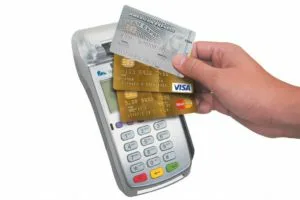Cash back credit card bank loan bank of america limit
Understanding Cash Back Credit Cards
Cash back credit cards have become an essential financial tool for many consumers. They offer the opportunity to earn a percentage of your spending back in the form of cash rewards, making everyday purchases more rewarding. In this article, we will delve into the intricacies of cash back cards, how they work, and how you can maximize their benefits.
Types and Categories of Cash Back Credit Cards
Flat-Rate Cash Back Cards
These cards offer a consistent cash back rate on all purchases, simplifying the rewards process.
Tiered Cash Back Cards
These cards provide different cash back rates for various categories of spending, such as groceries, dining, and travel.
Rotating Category Cash Back Cards
These cards offer higher cash back rates on specific categories that change quarterly, requiring active management to maximize rewards.
Sign-Up Bonus Cash Back Cards
These cards offer a significant cash back bonus when you spend a certain amount within a specified period after opening the account.
Benefits of Cash Back Credit Cards
Immediate Rewards
Earn a percentage of your purchases back immediately, enhancing the value of everyday spending.
Financial Flexibility
Use cash back rewards for anything you want, from paying off the credit card balance to investing or saving.
Simplified Rewards Structure
Many cash back cards offer straightforward rewards structures, making them easier to use compared to other types of rewards cards.
Introductory Offers
Take advantage of attractive introductory offers, such as 0% APR on purchases or balance transfers for a limited time.
How Cash Back Credit Cards Work
Earning Cash Back
Understand the mechanics of earning cash back, including the types of purchases that qualify and the percentage of cash back offered.
Redeeming Cash Back
Explore various ways to redeem cash back, such as statement credits, direct deposits, or gift cards.
Managing Cash Back Categories
Learn how to manage and optimize rotating category cards to maximize your cash back earnings.
Choosing the Right Cash Back Credit Card
Assessing Your Spending Habits
Evaluate your spending patterns to determine which type of cash back card will yield the highest rewards.
Comparing Offers
Analyze different cash back cards, focusing on cash back rates, annual fees, and other benefits to find the best option for you.
Reading the Fine Print
Understand the terms and conditions, including any caps on cash back earnings and expiration policies.
Maximizing Cash Back Earnings
Strategic Spending
Plan your purchases around high cash back categories to optimize your rewards.
Combining Cards
Use multiple cash back cards to take advantage of different cash back categories and maximize overall earnings.
Monitoring and Tracking
Regularly monitor your cash back earnings and keep track of rotating categories and spending limits.
Common Myths About Cash Back Credit Cards
Myth 1: High Annual Fees Are Always Bad
Debunk the myth that high annual fees are always detrimental by highlighting cards where the rewards outweigh the costs.
Myth 2: Cash Back Cards Are Only for Big Spenders
Explain how cash back cards can be beneficial for consumers with varying spending levels.
Myth 3: Cash Back Rewards Are Hard to Redeem
Clarify the ease and flexibility of redeeming cash back rewards.
Personal Stories and Case Studies
Real-Life Experiences
Share stories from individuals who have successfully utilized cash back credit cards to enhance their financial well-being.
Case Study: Maximizing Rewards
Present a case study demonstrating the strategies used by a savvy credit card user to maximize cash back earnings.
Expert Insights
Financial Advisors’ Opinions
Include quotes and advice from financial experts on the best practices for using cash back cards.
Industry Trends
Discuss the latest trends in the cash back credit card market, such as new card offerings and changing consumer behaviors.
Understanding Credit Limits and Bank Loans
What Is a Credit Limit?
A credit limit is the maximum amount of credit that a financial institution extends to a borrower. This limit is based on various factors, including the borrower’s creditworthiness, income, and debt-to-income ratio. Understanding your credit limit is essential for managing your spending and avoiding over-limit fees.
Factors Influencing Credit Limits
- Credit Score: Higher credit scores generally lead to higher credit limits.
- Income: A higher income can result in a higher credit limit as it indicates the ability to repay.
- Debt-to-Income Ratio: Lower ratios are favorable, as they show the borrower can handle more debt.
- Credit History: A history of responsible credit use can lead to increased credit limits over time.
How to Increase Your Credit Limit
- Request an Increase: Contact your credit card issuer to request a higher limit.
- Automatic Reviews: Some issuers periodically review your account and may increase your limit automatically.
- Improve Your Credit Score: Better credit scores can justify a higher limit.
- Show Increased Income: Report any increase in income to your issuer.
What Is a Bank Loan?
A bank loan is a sum of money borrowed from a bank to be repaid with interest over a specified period. Bank loans can be secured or unsecured and serve various purposes, such as buying a home, financing education, or consolidating debt.
Types of Bank Loans
- Personal Loans: Unsecured loans used for various personal expenses.
- Mortgage Loans: Secured loans specifically for purchasing real estate.
- Auto Loans: Secured loans for buying vehicles.
- Student Loans: Loans designed to cover educational expenses.
- Business Loans: Loans for starting or expanding a business.
Loan Application Process
- Pre-Approval: Initial assessment to determine eligibility.
- Application: Complete and submit the loan application with necessary documents.
- Credit Check: The bank reviews your credit history and score.
- Approval: If approved, you receive the loan terms and conditions.
- Disbursement: The loan amount is transferred to your account.
Factors Affecting Loan Approval
- Credit Score: Higher scores increase approval chances.
- Income Stability: Stable and sufficient income is crucial.
- Debt-to-Income Ratio: Lower ratios are preferred.
- Employment History: A steady employment history is favorable.
- Collateral: For secured loans, the value of the collateral is a key factor.
Bank of America: Credit Limits and Loans
Credit Card Offerings
Bank of America offers a variety of credit cards, including cash back, travel rewards, and low-interest cards. Each card comes with its own credit limit, determined by the applicant’s creditworthiness and financial situation.
How Bank of America Determines Credit Limits
Bank of America considers several factors when setting credit limits:
- Credit Score: The applicant’s credit score plays a significant role.
- Income: Higher income can lead to higher credit limits.
- Existing Debt: The bank evaluates the applicant’s current debt levels.
- Credit History: A strong history of on-time payments and responsible credit use can result in higher limits.
Bank of America Loan Products
Bank of America provides a wide range of loan products, including:
- Home Loans: Mortgage products for purchasing or refinancing homes.
- Auto Loans: Financing options for new and used vehicles.
- Personal Loans: Unsecured loans for various personal needs.
- Small Business Loans: Funding options for small business owners.
Applying for a Loan at Bank of America
- Online Application: Conveniently apply for loans through the Bank of America website.
- In-Person Application: Visit a branch to discuss loan options with a representative.
- Required Documents: Prepare necessary documents, such as proof of income, identification, and credit history.
Preventive Measures for Managing Credit and Loans
Maintaining Good Credit Health
- Timely Payments: Always pay your bills on time.
- Monitor Credit Reports: Regularly check your credit reports for accuracy.
- Manage Debt: Keep your debt levels manageable and avoid maxing out credit limits.
Strategies for Loan Management
- Budgeting: Create a budget to manage loan repayments and other expenses.
- Emergency Fund: Maintain an emergency fund to cover unexpected expenses.
- Refinancing Options: Consider refinancing loans to take advantage of lower interest rates.
Personal Stories and Case Studies
Case Study: Successfully Managing a Cash Back Credit Card
John, a frequent traveler, uses a Bank of America cash back credit card to earn rewards on travel and dining. By strategically using his card for these categories and paying off the balance in full each month, John maximizes his cash back earnings and avoids interest charges.
Case Study: Navigating a Bank Loan for a Home Purchase
Jane, a first-time homebuyer, secured a mortgage from Bank of America. By improving her credit score and saving for a larger down payment, she qualified for a competitive interest rate. Jane’s careful financial planning ensured she could comfortably afford her monthly payments.
Expert Insights
Financial Advisor Tips on Credit Cards
Financial advisors recommend choosing a cash back credit card that aligns with your spending habits. For instance, if you spend heavily on groceries, a card offering higher cash back in that category can be beneficial. Additionally, always pay off your balance in full to avoid interest charges.
Insights on Bank Loans from Industry Experts
Experts suggest comparing loan offers from multiple banks to find the best terms. They also advise borrowers to understand the total cost of the loan, including interest rates, fees, and repayment terms, to make informed decisions.
FAQs About Cash Back Credit Cards
What Is a Cash Back Credit Card?
A cash back credit card offers a percentage of your spending back as cash rewards.
How Do I Choose the Best Cash Back Credit Card?
Consider your spending habits, compare different cards, and read the terms and conditions carefully.
Can I Combine Cash Back Rewards from Multiple Cards?
Yes, using multiple cash back cards strategically can help maximize your rewards.
Do Cash Back Rewards Expire?
This depends on the card issuer’s policy, so it’s important to read the fine print.
What Are the Common Fees Associated with Cash Credit Cards?
Annual fees, foreign transaction fees, and late payment fees are common with cash back cards.
Conclusion
Cash back credit cards can be a powerful tool for enhancing your financial health, offering tangible rewards for everyday spending. By understanding how they work, choosing the right card, and strategically managing your spending, you can maximize the benefits of these cards.

